The Best Bars in America 2025



When you summon memories of your favorite bar, what comes to mind? Is it the dexterity with which the bartender chiseled a block of ice into a gleaming sphere? Is it the way eyedropper pools of herbed oil floated on the surface of your martini like skimmed stones? Is it how you got to watch your thirty-dollar cocktail emerging from a dome of smoke? Maybe, maybe. But . . . probably not. Neat tricks those are, but if we’re really, actually talking about your favorite bar, we’re talking about gathering along a counter or around a table with people you’d die for. We’re talking about a place where you can loosen up and be yourself and incinerate all that world-gone-mad stress before it incinerates you. We’re talking about a bar whose very existence says something about the community you happen to inhabit.
That’s why we here at Esquire have decided to steer our annual Best Bars franchise in a different direction in 2025. No disrespect to the Gandalfian skills of America’s top mixologists, but we’re not really going to bars for wizardry right now. We just want a damn drink—and a jukebox, please, if that’s not asking too much. So this year we went to some of our favorite writers in America (including one playwright, whose work shows great promise) and tapped a few of our own staffers with a simple question: Where do you go for a drink when the world’s giving you the blues? —Jeff Gordinier
THE UNION CLUBMissoula, Montana
Only about 30 percent of the mustaches are ironic. Which might be the maximum allowable percentage for a dance-hall dive bar, which the Union Club most gloriously is. The center of Montana’s labor movement for more than a century, this 1917 Labor Temple building is also a temple for those whose labor is over for the day. This is a honky-tonk’s Platonic ideal: Behind an unassuming street entrance, a vast and virtually windowless cavern opens to reveal pool tables and ping-pong tables and a live band and the hardest-working dance floor imaginable. The crowd is a friendly mix of union folk, tattooed hipsters, Local 400 Operating Engineers in cowboy hats playing darts, and grad students in beanies. The lack of pretension (you order food directly from the fry cook) and the price (cheap, cheap pitchers of cold, cold beer) conspire to remind you of the good ol’ days before bartenders became mixologists with three-dollar ice cubes and tweezers to garnish your Instagram-ready cocktail. At the Union Club, nothing is tweezed. The only garnish is your shot of Jameson. Drink up, drink up, you’ve found it, my friend, paradise at last. Somebody’s eyeing you like they wanna dance? Grab a hand, take a spin, you’re feeling fine. —Beth Ann Fennelly, author of The Irish Goodbye, out February 2026
SCHMUCK.New York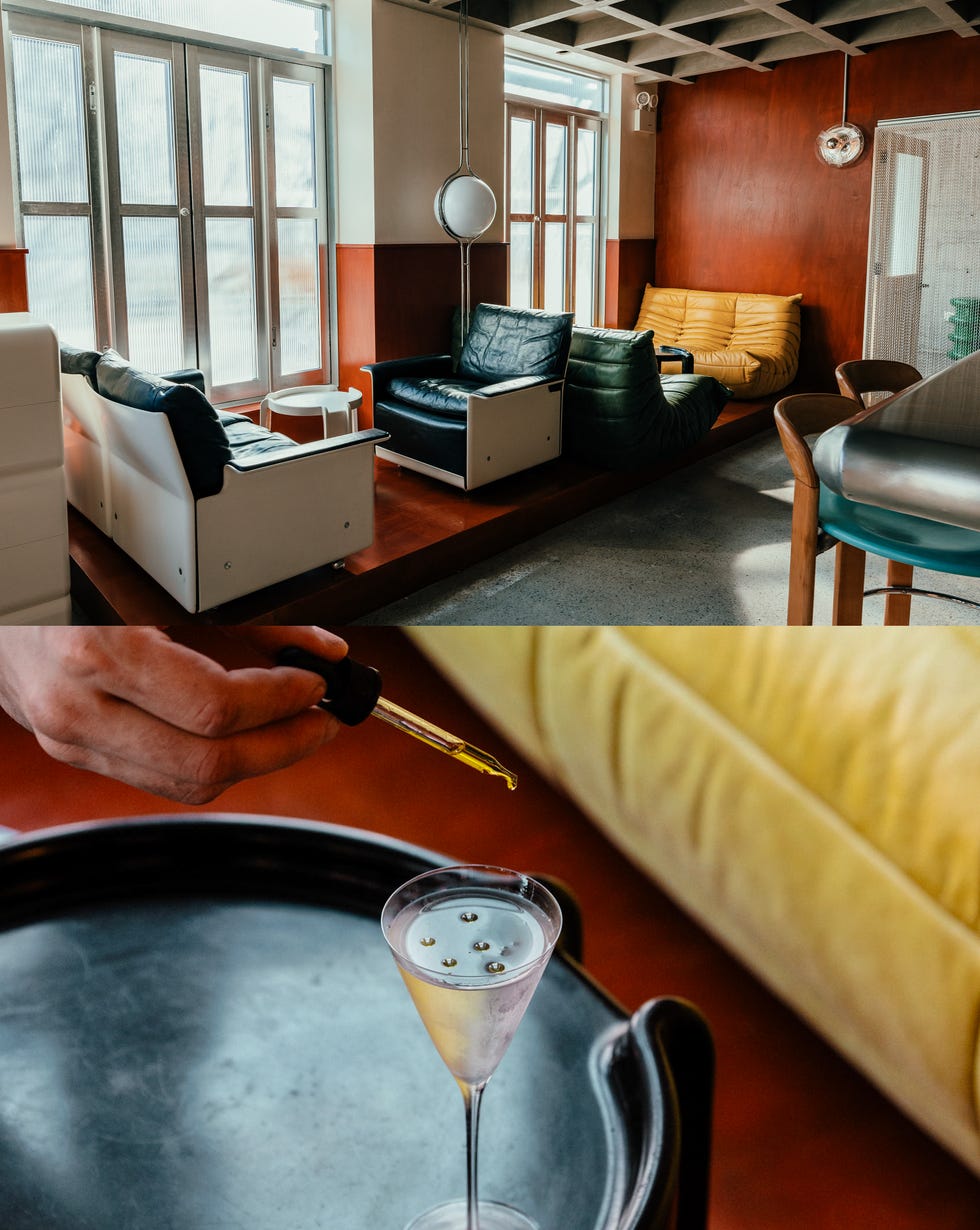
Okay, yes, this one is new and hot. But it already feels like home, if home happened to be a friend’s chic, cozy den in Spain. One of the world’s buzziest bar teams—Moe Aljaff and Juliette Larrouy of Two Schmucks, in Barcelona—brought a new concept to Manhattan’s East Village this year, and, improbably, it lives up to the hype. Schmuck is casual, welcoming, and absolutely slammed. The place is designed to look like a friend’s living room (think vintage couches, mismatched chairs), but the vibe is much more neighborhood basement party. Smatterings of scenesters are lounging about, the low-profile tables between them covered in half-chugged cocktails and stonery snacks while a rap-heavy soundtrack bumps in the background. The drinks menu is unfussy but surprising. Standouts include the Bread with Tomatoes, a vodka highball that’s meant to remind its audience of the last moments of a tomato salad, mopped up with fresh bread (despite the poetry, it manages to also taste like something you can make at home) and the Fika, a rum-based offering inspired by the Swedish tradition of taking your coffee with a cinnamon bun. Best yet, though, is the friendly staff. Even the large bouncer outside manages to make you feel at home while you stand in line—which, I promise, you will. Don’t worry, it’s worth the wait. —Madison Vain, Esquire senior digital director
LOREM IPSUMCharlotte, North Carolina
When I first met the bartender Justin Hazelton years ago, he was already shaking things up in Charlotte’s hospitality scene. Now, with Lorem Ipsum, he’s created something truly special: a love letter to Black culture, music, and storytelling through cocktails. Tucked inside Hotel Refuge, Lorem Ipsum is a cozy listening bar where you can vibe out to curated DJ sets—everything from R&B, soul, and jazz to Afro-Caribbean and Latin beats. You can even bring your own vinyl to spin. It’s intimate and intentional, the kind of place where you can actually hear your people talk but still catch a groove. What I love most, as a chef deeply rooted in Black southern foodways, is the bar’s reverence for our culinary culture. Spiritless drinks like the Jerk nod to red-drink traditions with hibiscus, lime, and ginger, while Lemon Pepper (with its blend of tequila and fresh black pepper and lemongrass) pays homage to the wings made iconic by Black Atlanta. But Lorem Ipsum represents much more than the drinks. It’s a third space. There are no dress codes, no overpriced beverages, no sections to sit in. It’s a place where you feel seen and celebrated. Where the music hits, the menu references make you smile, and everyone—from the bar staff to the guests—feels like family. —Amethyst Ganaway, writer and chef in Charleston, South Carolina
LA DESCARGALos Angeles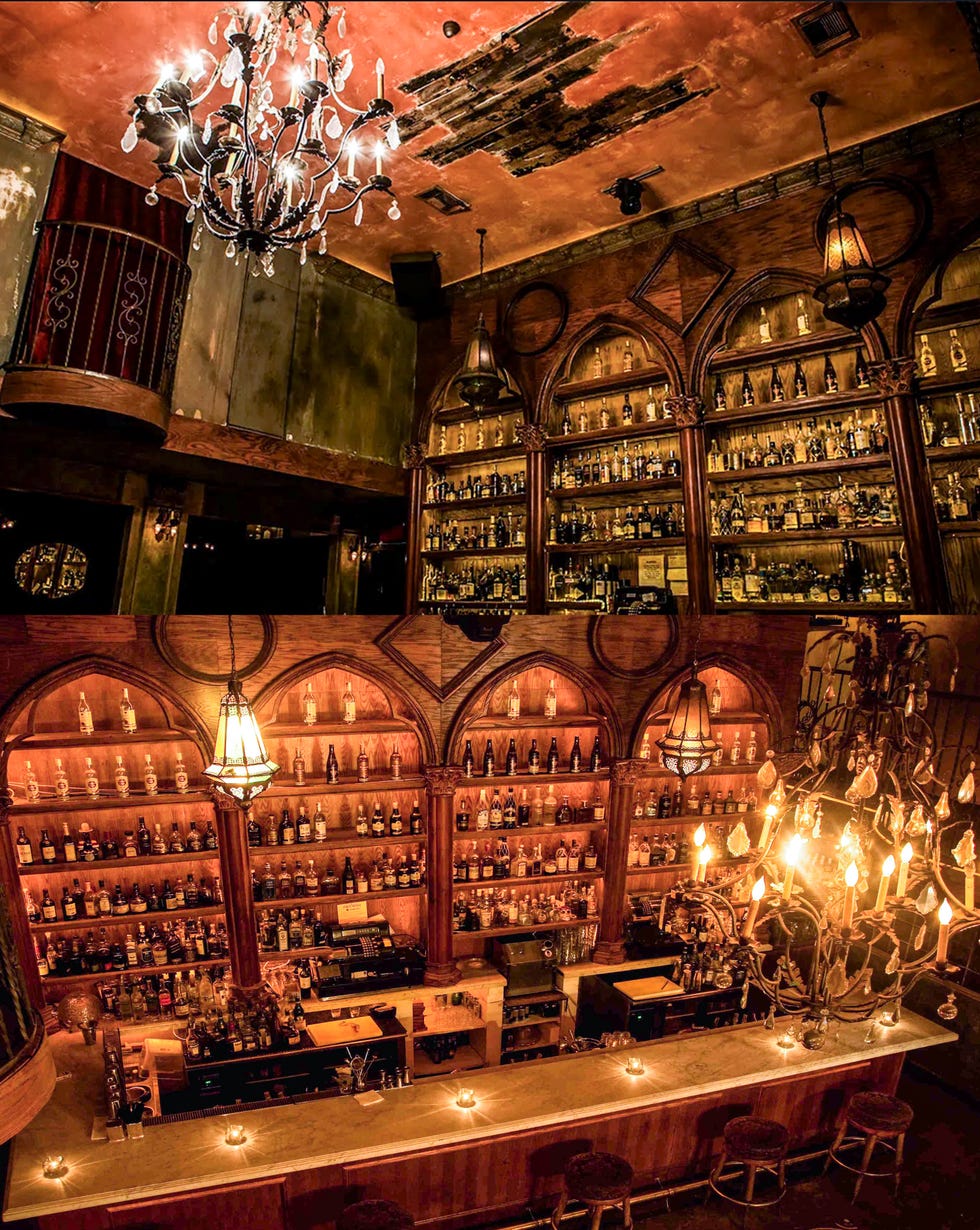
I descend the wrought-iron staircase. I hear conga drums and upright bass. It’s as though I’m passing through a portal into 1950s Havana, and I get goosebumps every time. My favorite bar in Los Angeles, La Descarga, opened in early February 2010, and I was there from the start with a cigar in hand (Partagas Serie D) and a generous pour of the Scarlet Ibis, a Trinidadian rum dripping with dark honey. I became a regular, and the place became a classic. It struck a chord with the Latino community as a place for dancing salsa, cumbia, reggaeton, and other Caribbean beats. The cocktails are classic: daiquiris, mojitos, and rum old-fashioneds delivered by a pair of Zapotec men, Luis Cruz and Rigo Garcia, who made their way up from barbacks to lead bartenders. (The brothers, like a lot of folks working at La Descarga, have been here since the beginning.) I dropped by recently and the DJ was playing “La Vida es un Carnaval,” by Celia Cruz, and the song transported me back to a wild night at La Descarga when Salma Hayek swayed to me in half-time and I reached out to light her cigar. Like the song says, life is a carnival. —Bill Esparza, James Beard Award–winning journalist and musician
MARIE'S CRISISNew York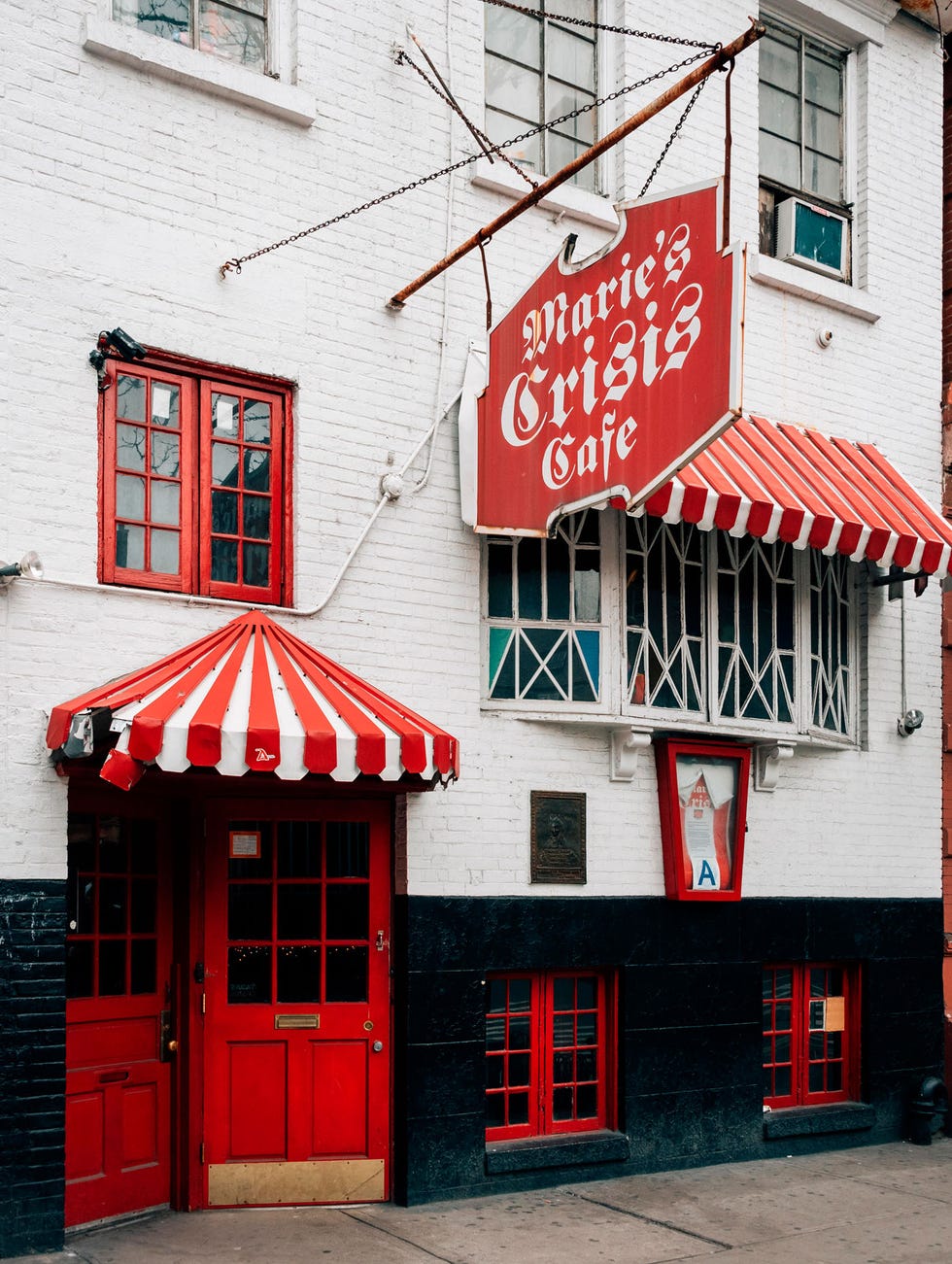
Down in a basement where the Manhattan grid gives way to the diagonals and chaos of the West Village, there is a place where the cacophony becomes a chorus. Marie’s Crisis is a piano bar—that’s the first thing you should know. A show-tune piano bar, specifically, and every night it’s humming with the living history of musical theater. A piano player on a five-hour shift plays a set from Little Shop of Horrors, then a CliffsNotes version of Cabaret, and everyone sings along. Most of the time, I love quiet. Marie’s Crisis is never quiet, and I love Marie’s Crisis more than any other place in New York City.
This is the only bar on earth that I want packed. Marie’s Crisis is at its best when it’s crowded, especially late on a Saturday night, when the Tisch kids are joined by the tristate area’s drama teachers and the performers who just peeled themselves out of their Lion King cheetah costumes and you. When you’re all jammed in, shoulder to shoulder, bellowing “Being Alive.” It’s not simply that everyone knows all the words to all the songs. It’s that they know whether they’re a tenor or a baritone. It’s that they harmonize.
Marie’s Crisis began as a speakeasy in 1929. It’s got a WPA mural on the back wall commemorating Thomas Paine—the guy who wrote the words “these are the times that try men’s souls”—who happened to die here in 1809, when the building was a boardinghouse. It’s cash only, the pours are heavy, and the stairs to the bathroom are steep enough to kill you even if you’re sober. If you want craft cocktails or conversation, you’d be better served elsewhere. Honestly, go elsewhere. The place is small.
I have had more epic nights that started or ended at Marie’s Crisis than I can count, but it stands out as the last great place I got to take my parents to. We had all met up in the city for my mom’s eightieth, it was early enough to find it only very crowded, and the kids gave up their seats at the piano, no questions asked. Mom requested some Frank Sinatra, and that’s not really what they do at Marie’s Crisis, but the piano player indulged her, and in an instant everyone was singing “Fly Me to the Moon.” The voices bounced off the stone walls of a basement bar that had seen Stonewall and the seventies and AIDS and would soon see Covid and whatever we’ll end up calling this current disaster. Decades of harmony exist in that basement, unbroken. And we were part of it.
Marie’s Crisis has survived a lot of the times that have tried men’s souls. But as Elaine Stritch sang in the Broadway revival of Follies, she’s still here. —Dave Holmes, Esquire editor at large
FARMSHOPSanta Monica, California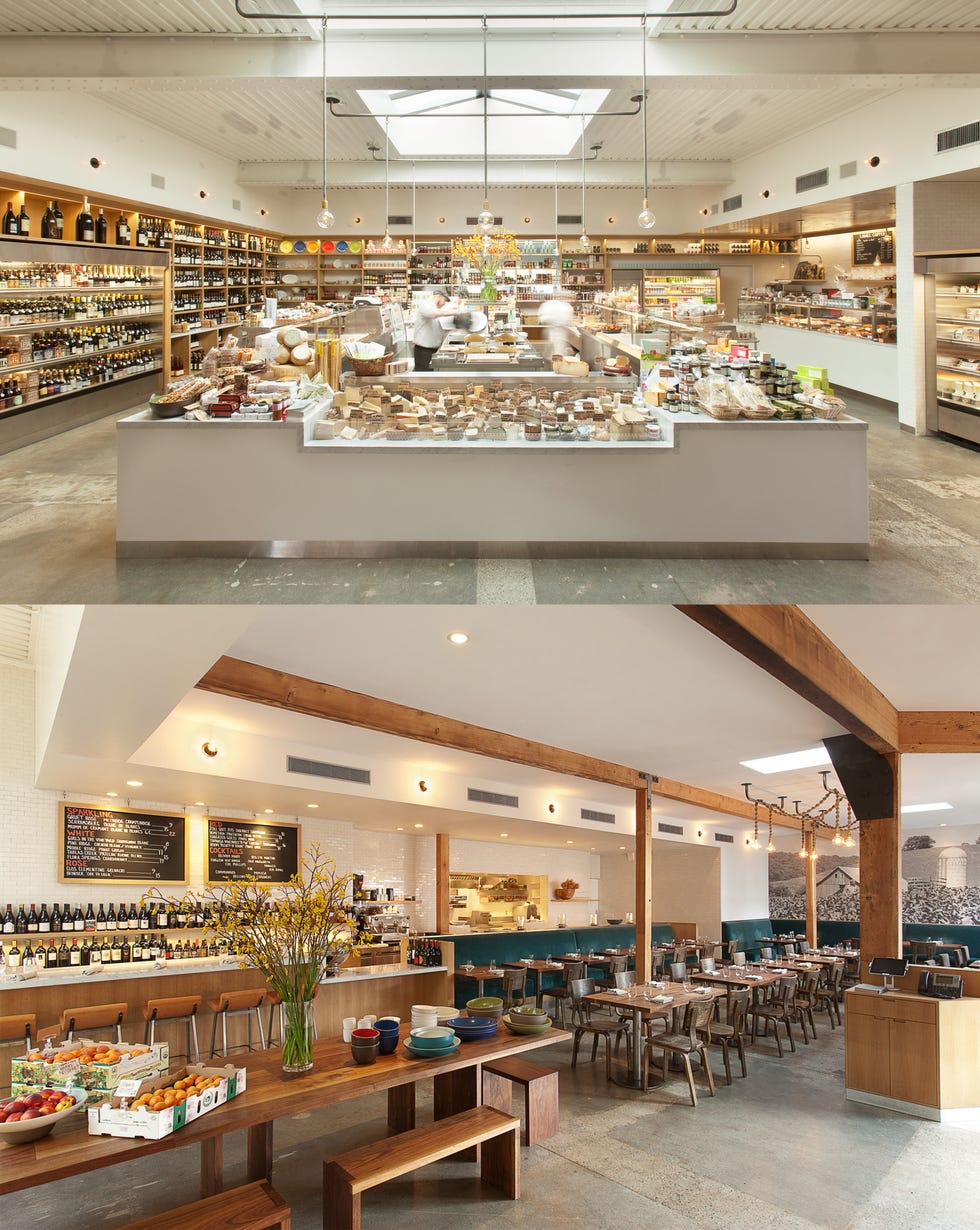
I’ve left the States for California, which has, as Elon said, “the most expensive weather on earth.” I live here as I want to be close to my taxes. There is the offset, as above, of The Weather; and that’s about it. My neighborhood houses no community. One can live twenty years and never know the names of the folks next door. Not only do neighbors not greet each other on the street, it is the form to portray ignorance of the others’ presence.
The custom is suspended only for comments about dogs but was abrogated during the late fires, when, there we were, evacuated and jammed up in a hotel. Spouses, kids, and pets in one room and happy to be there, and happy to see our fellows in the morning. One is also permitted conversation with the bartender and the fellow attendees.
We live around the corner from the Brentwood Country Mart, which is to the shopping center as Holyroodhouse Palace is to the mud hut. It houses the neighborhood joint, the Farmshop, a restaurant, grocery, and bar. And the bar houses Nick the Bartender.
The bar, but not the restaurant, stayed open during Covid, pinging the walls with the incredulous plaints of us homebound wage slaves.
And now, in the resurgimiento, it has become this area’s hangout for those industry folk not yet content to shuffle off to Buffalo. Myself included.
Nick the Bartender, Nick Westbrook, has honored my family with two drinks, created in our name and on the menu: Pidgey’s Negroni (for my spouse Miss Pidgeon) and the Oleanna Melancholia, for the play we inflicted on an enraged New York in 1992.
Nick is an entrepreneur away from the bar. He curates (chooses) and sells to the Lipton-averse beautiful rare oolongs, banchas, darjeelings, and so on, with appropriate stories and instructions.
And he has a biscuit company, Pa’s Biscuitisserie. He re-created his grandfather’s old-time Georgia recipe and sells ’em, frozen, from the market’s cooler, and hot and buttery on weekends in pop-ups down in Venice. Viz: biscuits and cheese, and gravy, and eggs, with smoked brisket, and bourbon-infused bone marrow. The bourbon is Woody Creek, the product of his (and my) homeboy, William H. Macy, of Marietta, Georgia. Everybody goes to Nick’s.
To chew the rag about the top note or bouquet of a cask-strength rum is most enjoyable. Not only does one get to talk to a human being about something besides politics, one gets to drink the damn thing.
The chat about the light oak finish is one with the discussion of the merits of the cigarette case. It is, as the lingerie, on the main thing but, like the lingerie, delightful in itself. —David Mamet, playwright
BUD RIP'S OLD 9th WARD BARNew Orleans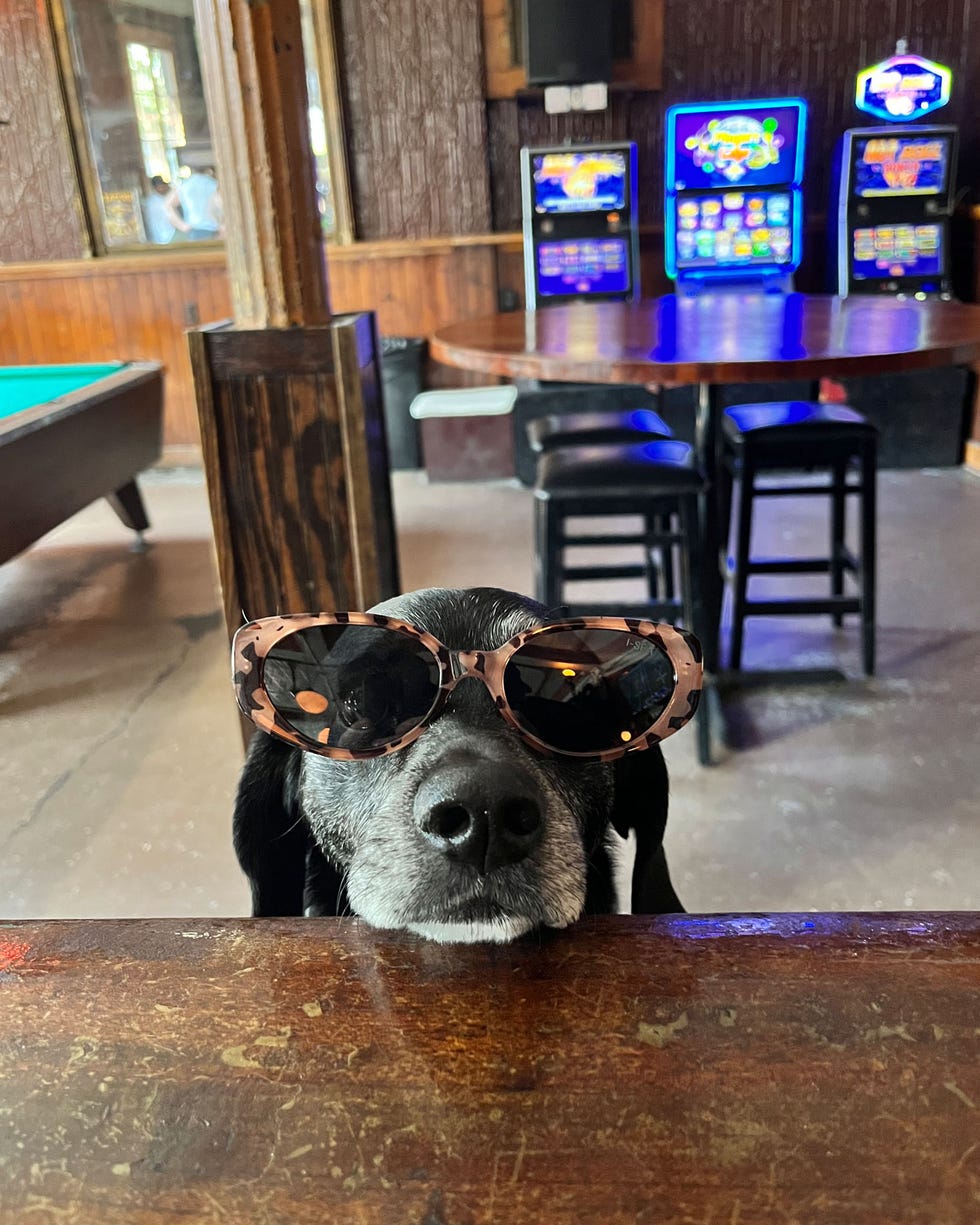
In a town like New Orleans, it can be hard for a bar to stand out. That’s why Bud Rip’s is so wonderful: It sort of doesn’t.It’s more about sitting back and being chill than about doing anything fancy or wild. The bar is stocked with all the liquor you’ll ever need, the jukebox has a choice mix of old soul and garage rock, and every now and then they host a crawfish boil. It’s spacious enough that you can almost always find a seat, and it’s comfortable inside even on a sweltering Louisiana afternoon. The thing that makes you go back again and again is that this Bywater watering hole feels lost to time. It’s the sort of bar that used to exist in almost any city with a cool, eccentric, artistic community—back before everything got replaced by yoga studios, expensive juice places, and sterile concept restaurants. It’s a local bar in the right sense: It caters to local writers, drag queens, bass players from sludge-rock bands, old guys with Cajun accents—exactly the sort of people you want to be around when you go to New Orleans. You can spend an entire day there and come away with a novella’s worth of experience and a hangover that can be easily cured with a po’boy. —Jason Diamond, whose novel Kaplan’s Plot comes out in September
SKYLINE LOUNGE AT LEGOLAND HOTELCarlsbad, California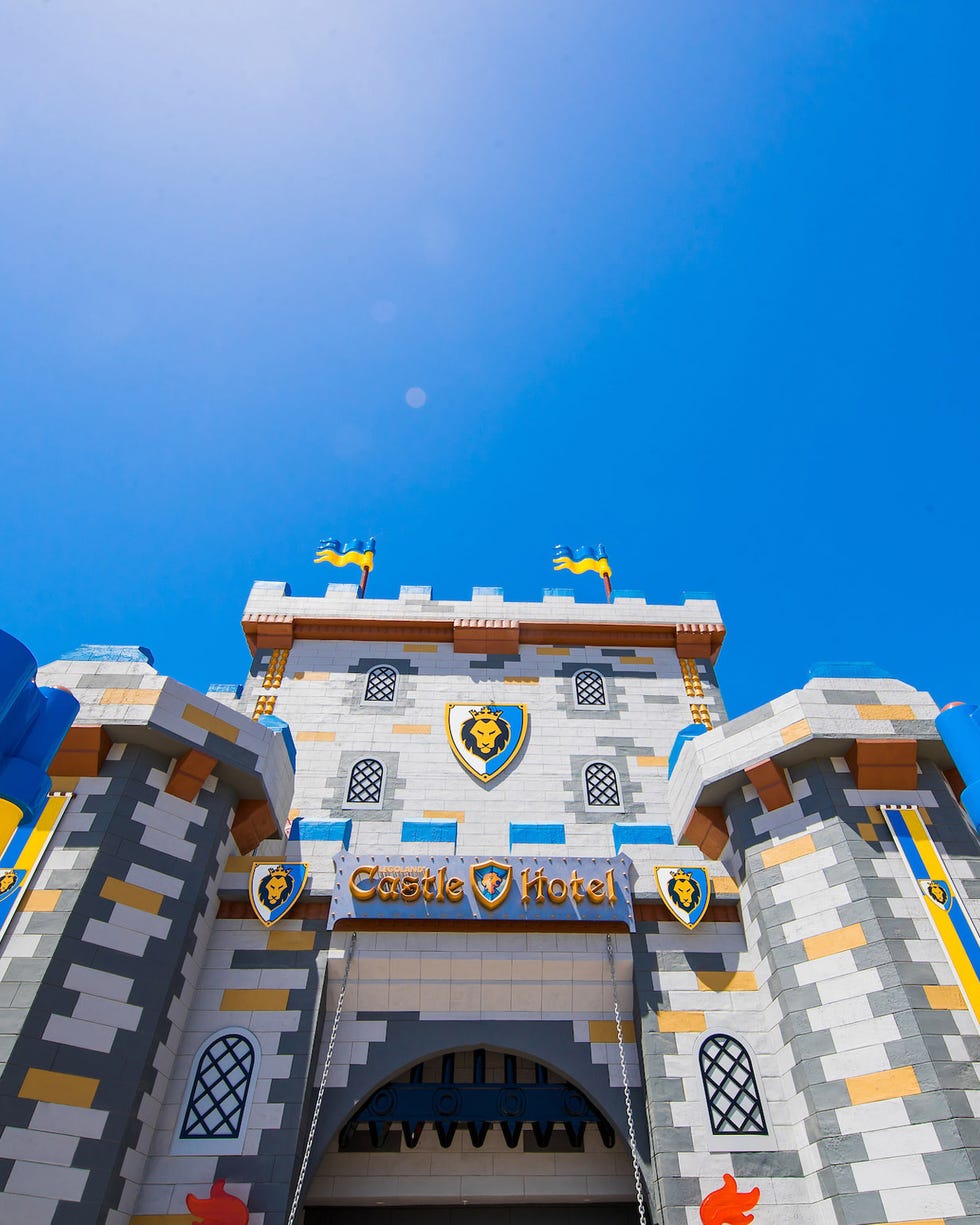
It’s fine, the Skyline Lounge. Five seats at the bar. Glass shelves for the booze, backlit. A TV. Good local beers on tap and a Woodford old-fashioned made with brown-sugar syrup—not bad at all. I’ll say that the place is a little bright for my taste. And $19.55 is not only a weird price but a tad much for an old-fashioned, brown-sugar syrup or not. Oh, and there are several hundred screaming, probably contagious children running around mere feet from where you are trying to enjoy your drink, playing with Legos and bickering and laughing too loud.
So, like, why is the Skyline Lounge one of the best bars in America?
Because it’s a bar! In the Legoland Hotel!
Not since the invention of the airport bar has a drinking establishment been so perfectly essential to its environment. Because here’s what the people at Lego know: You had to lift your sleep-drooled children out of bed at dawn for an early flight, and there was traffic because no one knows how to drive in the rain, and the first flight was not only bumpy but so late that you had to sprint—pretty much dragging the younger one through the terminal by his foot—to make your connection, and the second flight was even bumpier, and they couldn’t find your reservation at the rental-car place so you had to wait forty minutes while the kids fought over your phone, and your pits are sweating from carrying five bags at once, and jeeee-zus you could use a drink right about now.
They know all of that. That’s why they created the Skyline Lounge, which at this moment is the most beautiful bar you’ve ever laid eyes on. The frolicking children, a couple of whom are yours, are adorable. And that old-fashioned? The best I ever tasted in my life, and I would have paid three times the price. Which, awkwardly, would have been $58.65. —Ryan D’Agostino, Hearst editorial director, projects
DAN SUNG SALos Angeles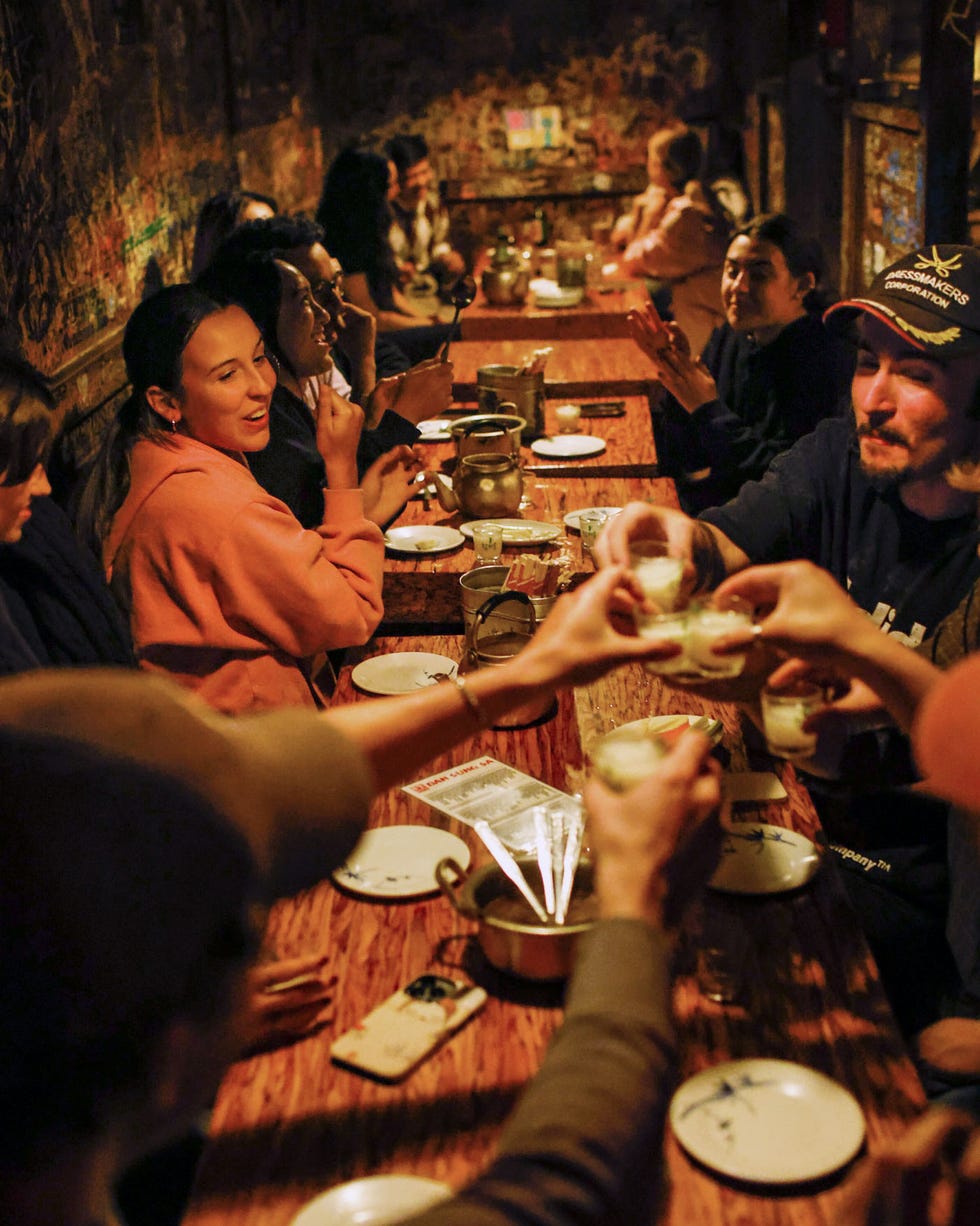
The older I get, the more I understand the acronym KISS: Keep It Simple, Stupid. Consider Dan Sung Sa, the legendary pocha in Koreatown. What’s not happening here: reservations (everyone waits, because democracy), dress codes, mixology, hushed tones, frills, complications, paparazzi, boredom, splitting the check with more than two cards, and—according to a sign in the bathroom—vomiting in the sinks. (Frankly, there are other spots in L. A. that can accommodate you superbly on all those fronts.) What is happening here: go-with-everything-and-down-easy Korean beers served in chilled glasses with soju sidecars, a giant menu of well-priced and well-seasoned anju(Korean drinking foods), spirited conversations, portraits of Kim Dae Jung and Kim Jong Il, ubiquitous graffiti, taking a load off and escaping for a few hours, and having a damn good time. Most crucially for your well-being and sanity, Dan Sung Sa is built for communing. So you’re going to connect with your pals here, and you and those pals are going to share everything, because, like life, Dan Sung Sa is best experienced with others. —Khuong Phan, writer and branding expert
CRUCIBLEAsheville, North Carolina
Asheville has been through hell. Maybe you heard about the hurricane that hit last fall—called Helene? That was way back in the previous administration, so you’d be forgiven for not remembering considering allthat has since transpired. But forgetting is not a luxury afforded to those left to pick up the pieces. Tragedy takes new shapes each day. Normalcy becomes the currency most coveted. Crucible, a cocktail bar in the hard-hit River Arts District, offers ongoing shelter from the storm. It’s an artist-owned bar that invokes a sense of the way things are supposed to be. The drinks are outstanding, and the menu’s a mix of originals and classics with minute embellishments. For instance—defaulting to mezcal in the Paloma (the only correct choice) or the Ango Daiquiri. In Asheville, Crucible is straight from Central Casting for the lead role of quintessential watering hole. The warmth of the place does not come from performative corporate hospitality. No multimillion-dollar build-outs here, no mixologists or conceits of an elaborate tax-harvesting scheme by absentee real estate developers. Asheville has survived trial by hurricane, and the aptly named Crucible offers an encompassing nostalgia for a time when algorithms and politicians didn’t define every facet of our lives. I’ll drink to that. —Stephen Satterfield is a modern cotton barron and host of Netflix’s High on the Hog
MEETINGHOUSE Philadelphia
Philly isn’t a shtick-friendly city. There’s very little patience for pretense. What I’ve always loved about my hometown—and what I feel more intensely the longer I live in New York—is that in Philadelphia a bar can just be a bar. (By extension: a restaurant, a restaurant; a person, a person.) Meetinghouse is just a very good bar. Since it opened in 2023, it’s been exactly what it says it is: a spot where friends gather. The word comes from the Quakers, who established themselves in the area in the seventeenth century. (I grew up, in fact, just off Meetinghouse Road.) Like all things Quaker, such a place tends to be plain and soft-spoken (i.e., shtick-less). So it is at Meetinghouse, the bar. There are five beers, three of them—a pale one, a hoppy ale, and a dark lager—made by Tonewood Brewing in Barrington, New Jersey. (The other two are the Belgian Trappist ale Orval and Guinness, poured here perfectly.) The cocktails are nicely balanced, batched, and only eleven dollars. There’s a concise menu of bar food. When there are flexes, they are quiet flexes—for instance, the custom-made tiles from the Moravian Tile Works or the roast-beef sandwich that stands out for its juicy heft. I’ve met friends at Meetinghouse, made friends, been alone, watched the Eagles win, watched them lose. I’ve visited during the day and at night, when it’s so crowded you can’t move and when it’s so empty you don’t dare to. At every angle and at all times, Meetinghouse rings as true as a bell. —Joshua David Stein, author of cookbooks, children’s books, and songs
HEMLOCK Catskill, New York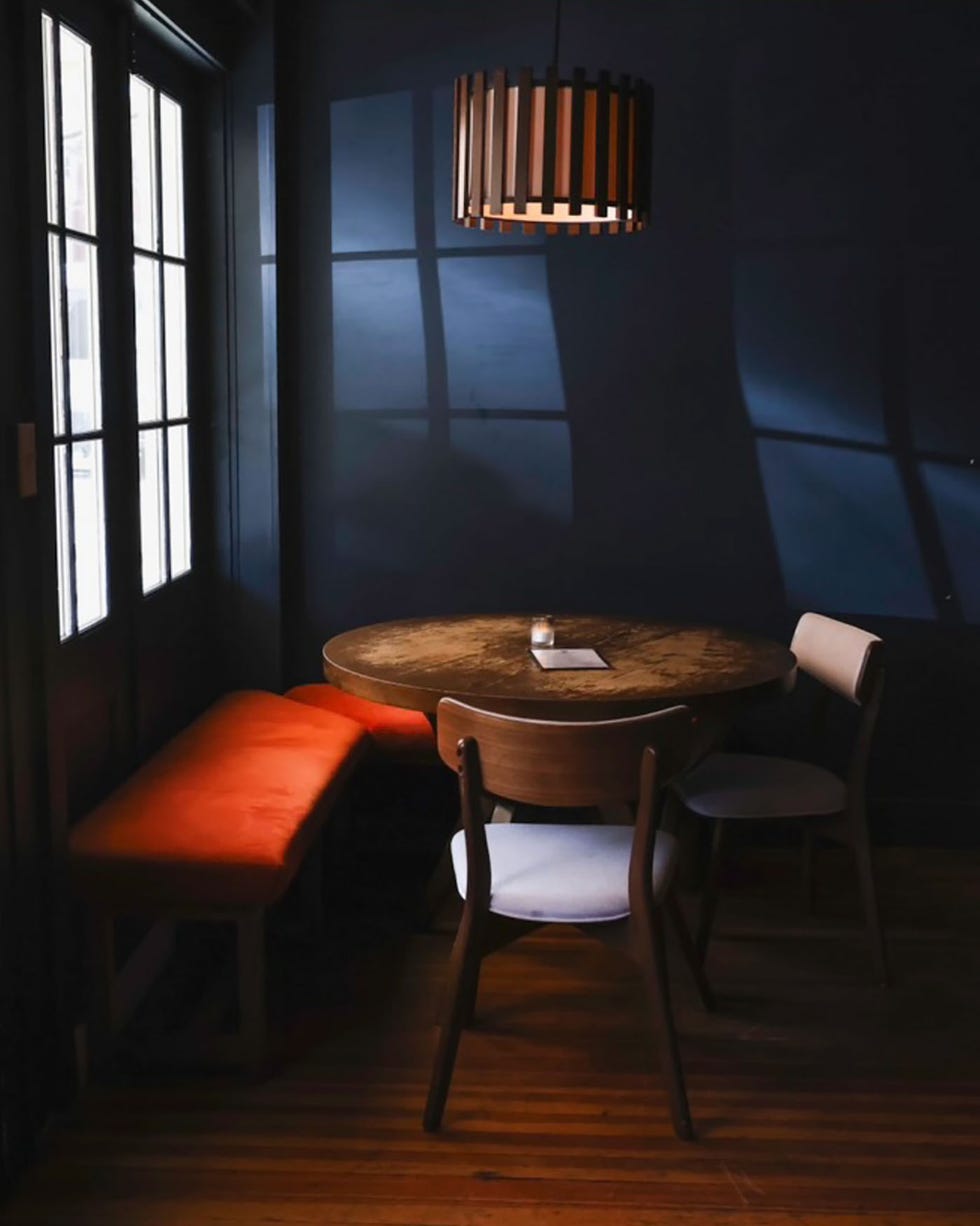
I was looking for a bar I could love. I wanted somewhere with character, a place where I could unwind and converse and sip drinks that satisfied me cerebrally and viscerally. I made the rounds in the Hudson Valley, where I live—a tipple-minded Goldilocks in search of Just Right. I tried hip new places, which were too loud or had food that tried too hard or were staffed by people who acted like they were doing you a favor or all of the above. Yeah, no. Then, as my distress mounted, a knowledgeable friend recommended Hemlock, a spot on the main drag in Catskill. We decided to meet up. We hadn’t seen each other in several years, so there was much to catch up on. As I walked into Hemlock, I noticed that the music was audible but never oppressive. I liked it right away. For the first time in my quest, I forgot why I was there and was just there: deep in conversation, sipping excellent drinks. I’d found a solid place to hang out, and that’s no small thing in a person’s life. Hemlock’s great achievement is that it exists to create space for you. —Peter Barrett, fermentation pioneer and creator of the Things on Bread Substack
TOO SOONPortland, Oregon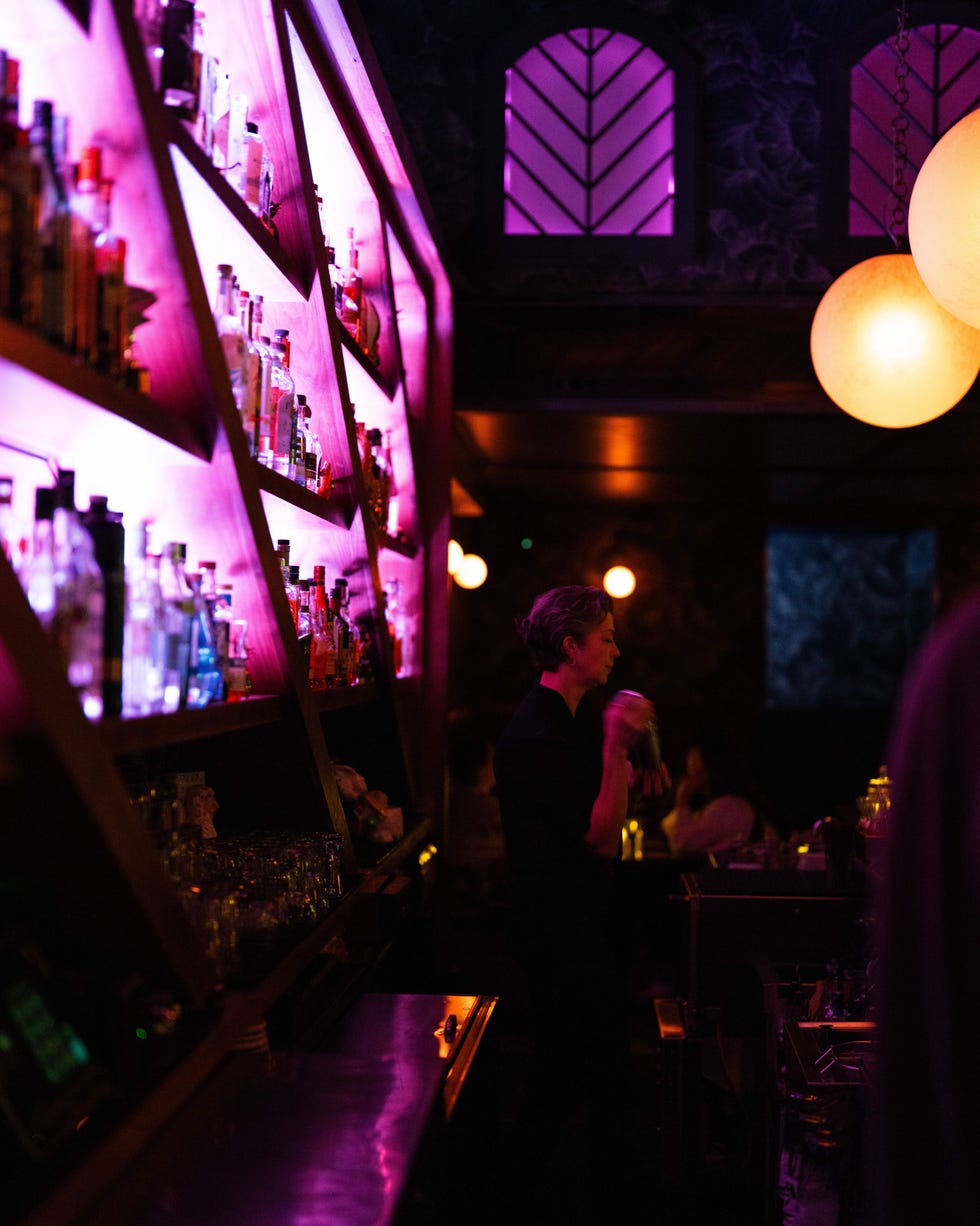
Late at night, when this dimly lit and intimate cocktail den decides the time has come to close up shop, you won’t hear a bartender banging a brass bell while screaming, “Last call!” Instead you’ll be handed a cookie freshly baked by a chef named Bones—it’s his grandmother’s chocolate-chip recipe, you’re told, as you bite into the still-warm treat and order a last round. A disco ball spins and flickers above, and bubbles appear in the soft-purple air. Where to next? The menu sends you off with a list of favorite restaurants, dance clubs, and bars so you can keep the party going. But let’s rewind: If you’ve lingered to this hour, you’ve imbibed a beverage or two mixed by industry vets Adam Robinson and Nick Flower, whom you’ll see intensely shaking and stirring behind the glowing bar. The large crystal-clear ice cubes? They were frozen in-house that morning before being hand-cut into neat squares and rectangles. Besides looking cool, these cubes melt more slowly, with less dilution, creating a cocktail whose essence lasts longer. Another reason to stick around. —Omar Mamoon, San Francisco–based writer and cookie-dough professional
SCHUBASChicago
The woman who would become my wife and the mother of my two daughters walked into my Chicago apartment—and my life—on October 21, 2004. Sally was my roommate’s girlfriend’s friend. She was also married, which meant she was none of my business. But there was an attraction, and I figured, What was the harm in inviting the group of them to see a rock ’n’ roll show that night?
Off we went to Schubas.
Schubas occupies a corner in the Lakeview neighborhood, a mile from Wrigley Field. The building owes its existence to Schlitz. To skirt teetotalist laws, beer makers around the turn of the twentieth century opened storefront bars tied to their breweries. Schlitz owned fifty-seven of them in Chicago. Schubas is among the few left.
It is a classic Chicago tavern: mahogany bar, tin ceiling, a smattering of tables. You can spend an evening bellied up or lose an afternoon at one of its tables. In the back—past the bathroom and an old photo booth—there’s a small concert venue that holds about 150 people. It’s an icon for the city’s music fans, playing host to the National, Wilco’s Jeff Tweedy, the Vulgar Boatmen, and countless others. In 2004, we caught a double bill: Troubled Hubble and Head of Femur. It was a great show.
Nothing happened between Sally and me that night, nor would it for some time. But our relationship started there, over cheap beer and a five-dollar rock show. For a recent anniversary, Sally gave me a framed picture of Schubas. It hangs across from me in my office. I think about the place every day.
To quote the city’s most renowned columnist, Mike Royko, Schubas is a “pure and simple and honest” tavern. You will enjoy yourself there. The people will be welcoming, and the beer will be cold. You can see live music almost every night.
And if you’re lucky, you might even fall in love. —Michael Sebastian, Esquire editor in chief
MOLLY'S IRISH PUB New Orleans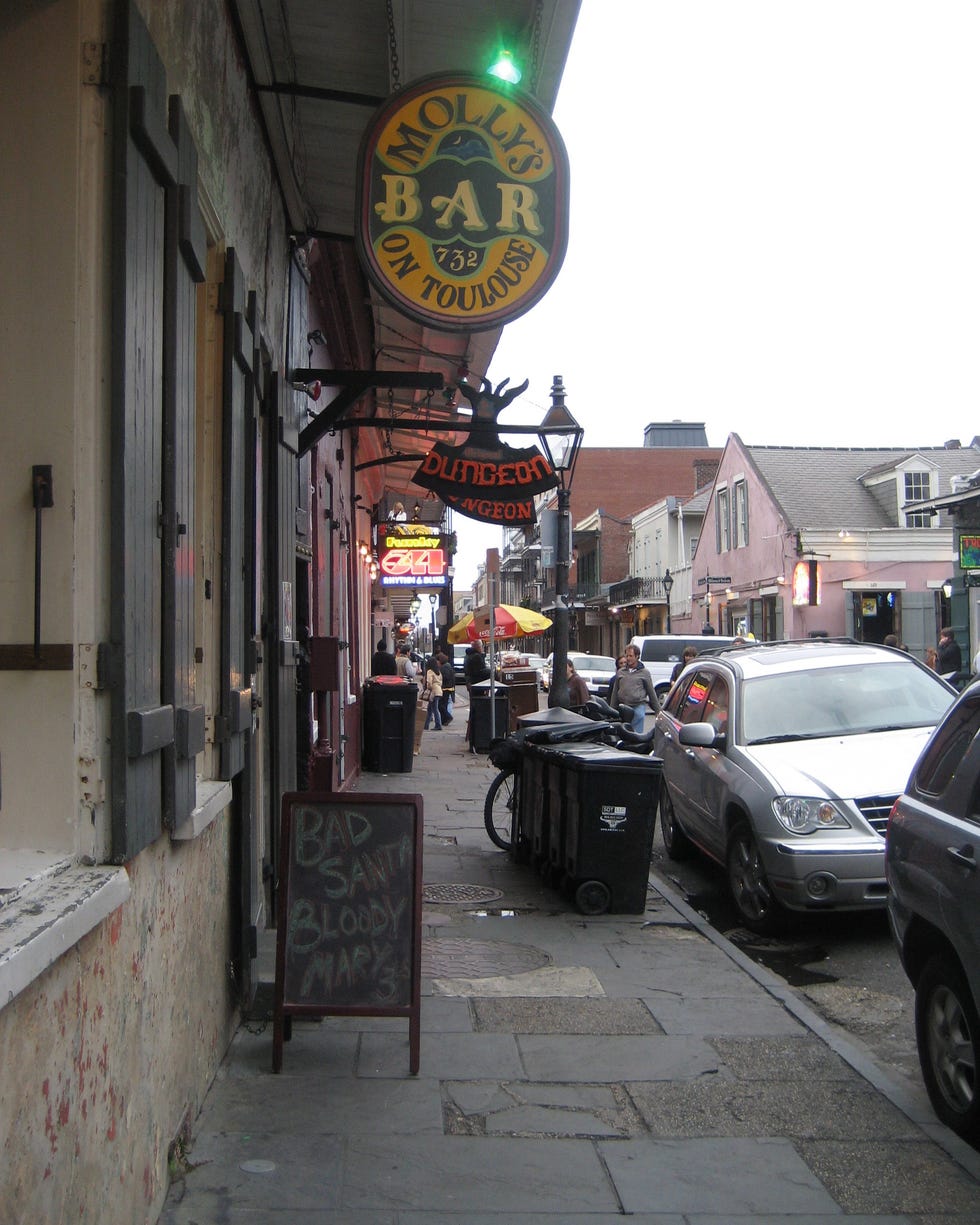
When you grow up in New Orleans, you learn to differentiate between where locals go and where tourists go. It’s almost as important as knowing your evacuation route during hurricane season. If you’re a local, you know how to weave your way through a dizzying flurry of tourists, doomsday prophets, magicians, and maybe even vampires on your way to Molly’s Irish Pub on Toulouse Street. The first time I stumbled into Molly’s, I thought I’d stay for one five-dollar Irish bomb shot. I got roped into a couple games of fifty-cent pool. Then I found out that the jukebox was stocked with actual 45’s of sludge-metal bands and Roy Orbison, and I never wanted to leave. Another time, to escape 100 percent humidity, I popped in for a frozen Irish coffee and found myself sitting next to a real New Orleans icon, Uncle Louie. The most recognized street performer in the French Quarter, Uncle Louie is always dressed as Uncle Sam. Uncle Louie regaled me with the backstory of how Molly’s has long been the go-to for street performers looking for refreshment on their breaks. He bought me a tequila and soda. If you take a close look at the painting hanging behind the bar, you might see him there too. —Sirena He, Esquire editorial assistant
esquire





